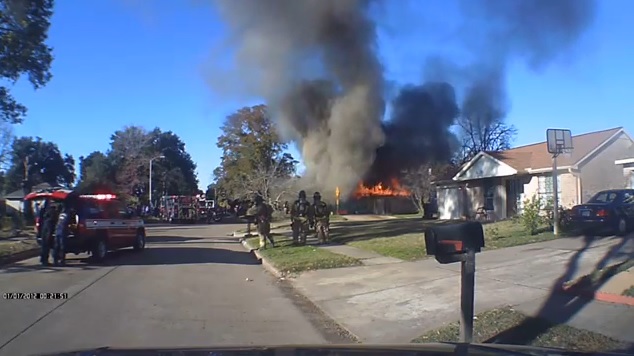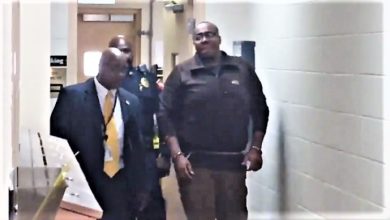Lessons from South Fulton: Avoid making a bad situation worse. Have a plan to respond when your reputation is on the line.
It has been described by many in the fire service as a “no-win situation”. For two weeks the South Fulton Fire Department in Northwestern Tennessee has been the focus of an enormous amount of discussion around the country and even around the world. The large majority of it has been negative. The fallout from this incident resulted in a physical assault on the fire chief. The chief, his firefighters and neighboring chiefs have also been the subject of phone, Internet and email threats. One chief tells me he’s even received two voodoo curses.
By now you know the South Fulton Fire Department was alerted to a fire at the home of Gene Cranick and his family but did not immediately respond because the Cranicks had not paid the department’s $75 membership fee. South Fulton and two other departments provide subscription-only fire protection to families in Obion County, a jurisdiction that does not have a fire department. South Fulton did finally respond when a call came in that the property of a neighbor, who is a subscriber was threatened by the fire. But the firefighters did nothing to save the Cranick home.
You have seen the videos on the Internet and heard the arguments on cable TV, including from such well known figures as Glenn Beck, Keith Olbermann and Bill Maher. And you’ve read the comments on STATter911.com and elsewhere (the website slashdot.org has 2000 comments from the general public on this story).
 This column is not meant to rehash the merits of what was and what wasn’t done on the fireground. The purpose is to look at it solely from a public image standpoint. The big question is, given the circumstances, was there any way to keep this story from having such a negative impact on the reputation of the South Fulton Fire Department, the other local departments and the fire service in general?
This column is not meant to rehash the merits of what was and what wasn’t done on the fireground. The purpose is to look at it solely from a public image standpoint. The big question is, given the circumstances, was there any way to keep this story from having such a negative impact on the reputation of the South Fulton Fire Department, the other local departments and the fire service in general?
From my perspective after 38-years in broadcast news, much of it covering the fire service, the short answer is yes. Even though I am sitting at a computer screen 800 miles away and have never been to Obion County, I firmly believe some of this fallout could have been avoided.
Obviously, a lot of mistakes were made. But these missteps weren’t solely because this was a rural area lacking sophistication in dealing with a reputation management issue. I’ve seen many of these same costly errors made by big city fire chiefs.
There were also some very smart moves made by a two of the local chiefs. There are things to learn from each of them. I plan to talk about that in a future column. But today’s posting deals only with the initial response to the news media on the scene and how it set the stage for what was to come.
Running from the video was not the answer
No matter what your beliefs are about the actions of the South Fulton Fire Department on September 29, the video generally told reporters and the public all they needed to know: That firefighters watched and did nothing as a family’s home burned to the ground.
I wrote in a previous posting this was the equivalent of man biting dog. Whether you like it or not this is the definition of news. Blame the news media, but get used to it. This is what reporters do for a living.
If firefighters had made even a half-hearted attempt to spray water on the house, it is likely we wouldn’t be here discussing this story. The local news would have reported a house burned down and people lost their belongings. It would have stayed local.
But of course that didn’t happen. So now what do you do if you are the fire chief and the local news has video of you and your firefighters looking like they were at a marshmallow roast while a citizen’s home was destroyed? Very simple. You better deal with it and deal with it fast or get buried by it.
Either because he couldn’t, wouldn’t or was told he shouldn’t, the local chief ran from the story. According to the initial news reports, no one from the South Fulton Fire Department would answer questions from reporters (and to my knowledge they still haven’t). Here’s how it was portrayed on the WPSD-TV website on the day of the fire:
It was only when a neighbor’s field caught fire, a neighbor who had paid the county fire service fee, that the department responded. Gene Cranick asked the fire chief to make an exception and save his home, the chief wouldn’t.
We asked him why.
He wouldn’t talk to us and called police to have us escorted off the property. Police never came but firefighters quickly left the scene. Meanwhile, the Cranick home continued to burn.
 In my time I have heard every excuse imaginable as to why a fire chief won’t talk to a reporter (often the reporter was me). I have found most of the reasons short-sighted and the tactic ill-advised. In this case I believe the actions blew the only chance the department had to soften the blow of the first report and possibly re-direct where the reporter was going with this story.
In my time I have heard every excuse imaginable as to why a fire chief won’t talk to a reporter (often the reporter was me). I have found most of the reasons short-sighted and the tactic ill-advised. In this case I believe the actions blew the only chance the department had to soften the blow of the first report and possibly re-direct where the reporter was going with this story.
It is very legitimate for the press, and in turn the general public, to try and get answers as to why the fire department failed to take action to put out a fire. I have heard from people familiar with what transpired who claim the reporter acted poorly on the scene. That may or may not be the case, but by being uncooperative and not telling their story, the South Fulton firefighters looked like they had something to hide. If they weren’t already the bad guys by failing to put water on the fire, this sealed their fate and set the tone for much that followed.
The good guys. The bad guys. And the not so bad guys.
Even in a place where they may only be a weekly newspaper and no TV station, you no longer have the luxury of waiting and presenting a nice, neatly packaged story. The Internet has changed that for good.
Now Is Too Late (updated with Now Is Too Late 2) is the title of a book written by Gerald Baron that addresses this very issue. Over the last decade Baron has advised some of the biggest companies in the world that when the crisis hits they need to tell their own story and tell it now.
 Many believe, like R Adams Cowley’s groundbreaking work in trauma, there is a golden hour for trying to take control of a story before it controls you. The Internet, texting, cell phone cameras and other tools of the digital age have changed the response time requirements when dealing with a reputation or crisis management type of issue.
Many believe, like R Adams Cowley’s groundbreaking work in trauma, there is a golden hour for trying to take control of a story before it controls you. The Internet, texting, cell phone cameras and other tools of the digital age have changed the response time requirements when dealing with a reputation or crisis management type of issue.
But something that hasn’t changed is very important in understanding why this story became such terrible news for the fire department and the fire service. It has to do with how reporters tell stories. In his book Baron repeatedly points out that reporters are always looking to place white hats and black hats on the people and institutions in their stories. They are trying to clearly let you know who are the good guys and who are the bad guys.
Obviously, in this case most of the coverage placed the white hat on Mr. Cranick who lost his home. The black hats sat squarely on the heads of the fire chief and his firefighters who let the house burn.
With the visual image of the firefighters failing to do what we expect firefighters to do, even Baron or other top notch crisis communicators might have a tough time replacing the firefighters’ black hats with white ones. But I think there was a good chance those hats could have been gray if the fire chief had spoken up immediately and not tried to chase the press away.
What could the fire department have said at the scene of the fire?
In telling your story you have to be realistic and recognize that if you try to defend the indefensible, justifying to the world why it was okay for the firefighters to let a man’s house burn, you might as well keep shunning the press.
Furthermore, if the chief’s message is blame all of this on Mr. Cranick and his family, you are again likely to be digging yourself a deeper hole. Yes, we know Mr. Cranick didn’t pay his bill despite three notices and if he had paid it there wouldn’t be a story. You really aren’t going to win friends and influence people by putting the blame on someone who just lost all of his belongings and his pets. It doesn’t do you any good to kick a man while he is down. This is not the image you want the public to have of firefighters. Firefighters are supposed to be the ones who rush to take care of people like Mr. Cranick. Those who are experiencing one of the worst days of their lives.
To me, here’s the key to the fire chief’s response at the scene. A week after the fire, at a press conference held by a neighboring fire chief, we learned details behind a lengthy all-out effort by the local chiefs to ditch this subscription plan for residents of Obion County. It turns out the municipal fire chiefs generally don’t like the subscription program and had long-ago presented their plan to change things. But by the time that press conference was finally held, this important information didn’t do all that much to impact a story that had, for days, raced across the Internet and the cable news channels. Letting the public in on this a week later (and coming from someone other than the Fulton fire chief) is like making a trench cut on the immediate exposure when the fire has already spread to the end of the block.
The South Fulton Fire Department chief should have shared this information with the reporter at the scene of the fire. The message is very simple:
“This is a policy we as firefighters absolutely hate. It tears us apart to be forced to watch this happen. It is not what firefighters are supposed to do. We have been put in this untenable position by the short sightedness of the political leaders of Obion County. I have been working with the other fire chiefs in the area to change this system. We have presented a proposal to abolish the subscription fire service in this area. It has been ignored for two years. We need the public’s help in getting this changed so other families don’t have to suffer like the Cranicks.”
The most important thing about this message is that it is the truth and there is plenty of paperwork and other evidence to back it up.
 It allows the chief to admit and not run from the basic story, and to explain why firefighters failed to act like firefighters. It immediately tells the public and the reporters you are on their side.
It allows the chief to admit and not run from the basic story, and to explain why firefighters failed to act like firefighters. It immediately tells the public and the reporters you are on their side.
While this may not excuse firefighters from having to answer the tough moral and ethical questions about failing to take action, it makes clear who put you in this situation. I can assure you there isn’t a reporter who wouldn’t include this in their story. Instead of the headline reading Firefighters Watch House Burn, it might have said Fire Chief Blasts Policy That Let House Burn.
If this had been done right away, the fire chief’s message would have been part of the story as it made its way around the world via the Internet. It would have likely been a prominent part of any stories that followed, including the cable network gabfests. There would have been a lot more people standing up for the firefighters.
But it’s not that simple Dave
Yes, I am aware that there could have been plenty of factors that would have prevented the chief from making this statement. Among them, the chief’s bosses in South Fulton might not have allowed him to take on the political leaders of Obion County. Just as likely, is that dealing with the reporters in this manner may not have been something the fire chief even considered.
I’m sharing these thoughts not to point fingers at South Fulton by telling them what they did wrong (they have already heard plenty of that). My goal is to look at the bigger lessons for the fire service.
The fire service has plans for its response to all kinds of emergencies. But most departments don’t have a real plan in place for dealing with a situation that can absolutely destroy the trust the public has in the fire department and its firefighters. Just as a fireground commander needs to visualize where that fire is going next, someone needs to quickly figure out where the story is going before you have a different kind of conflagration on your hands.
The South Fulton episode reminds us just how fast and how far a story impacting your reputation can travel. It shows that you need to be prepared so your message can travel WITH that story and not way, way behind it.







